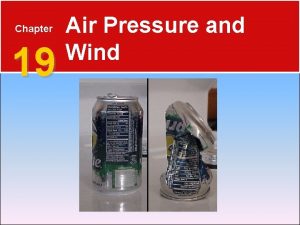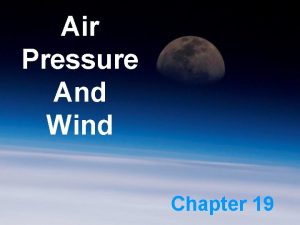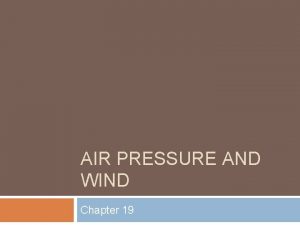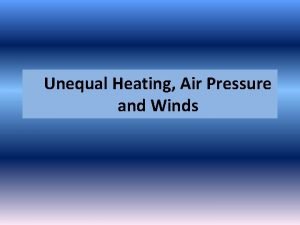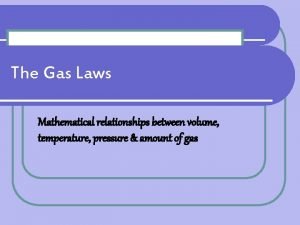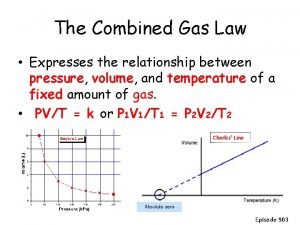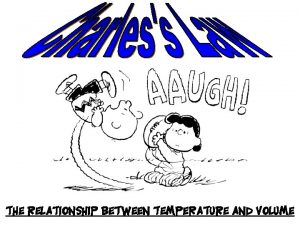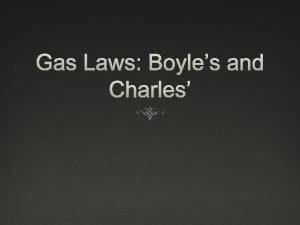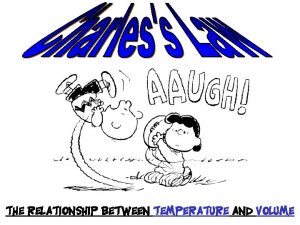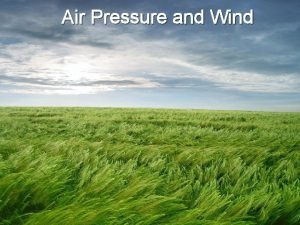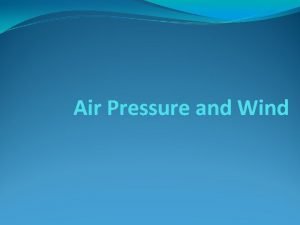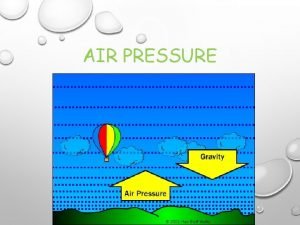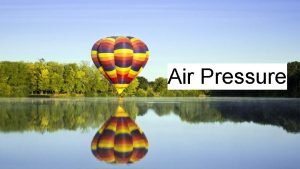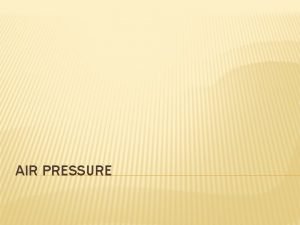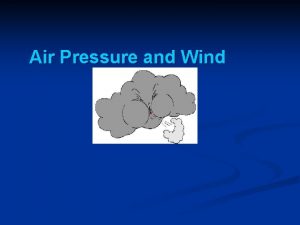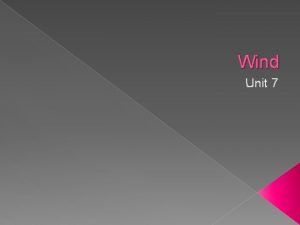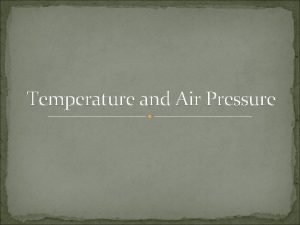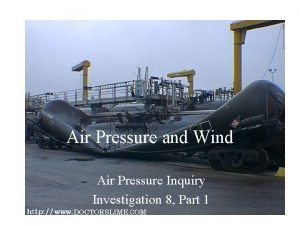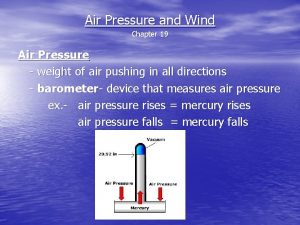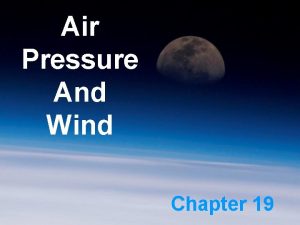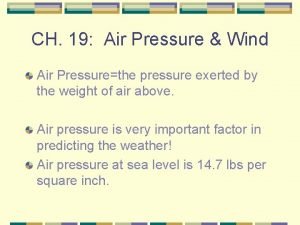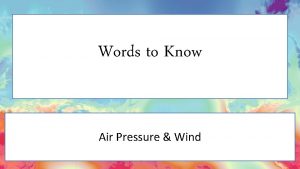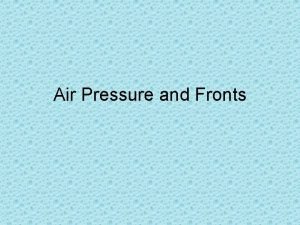Air Pressure and Wind Pressure Volume Temperature If
















- Slides: 16

Air Pressure and Wind

Pressure, Volume, Temperature ● If you increase pressure, what happens to Volume and Temperature? ● If you increase temperature, what happens to Volume and Pressure? ●Write a few sentences in your journal to explain two ways that pressure, temperature and volume are linked when talking about weather changes.

Air Pressure – “rules” ● Air pressure is exerted in all directions – up, down, sideways. ● The pressure balances in all directions equally. ●refer to can crushing demo; hot air balloon image in note packet ● Standard sea level measurement is 1013. 2 millibars = 29. 92 inches of mercury

Air pressure and weather ● Compare sea level readings to what our weather journals have indicated. ● What weather should we expect to see when barometric pressure decreases? ● What weather conditions would you predict when barometric pressure increases? ● Those are the Low and high pressure systems referred to on weather forecasts ● Where does temperature come into play then?

How are the Pressure gradients related to wind? the closer the gradients __________.

How is temperature related to wind?

What is the Low pressure in the Atlantic ocean?

How do winds blow around Pressure systems? ● Low pressure = “cyclone”, pressure decreases as you travel more toward the center – flow is counterclockwise ● High pressure “anti-cyclone” – pressure increases as you travel toward the center – flow is clockwise ● Rotation is due to change of pressure and Coriolis effect (more on this soon) ● Right/ left hand demo

Sketch this in your journal

Wind - cause and result ● The unequal heating of the earth’s surface creates differences in temperature, which leads to differences in pressure. ● Air flows from high pressure to areas of low pressure (this is diffusion – it happens with all molecules and matter, it is what we saw in the convection lab) ● Wind is the result of horizontals differences in air pressure. ● Solar energy is the ultimate energy source for most wind!

3 -D high and low pressure meet Sketch this

Summarize ● Please write 5 summary sentences, include the following: ● how is wind “created” ● What is the difference between high and low pressure systems in their motion ● What does barometric tell us in a weather report ● What kind of weather is associated with high and low pressure systems


Factors affecting Wind ● 1. pressure differences ( caused by? ) ● 2. Coriolis effect ( caused by? ) ● 3. Friction ( between air molecules and earth’s surface features) ● Pressure differences – the greater the differences the greater the wind speed

Wind symbols

Measuring Air Pressure ● A student of Galileo, invented a mercury Barometer – as air pressure in the tube increases, mercury rises in tube; as air pressure decreases, the column of mercury does also. ● Our weather data measure Barometric pressure in inches, this relates back to the original measurement system.
 Air temperature
Air temperature Winds are labeled according to
Winds are labeled according to Chapter 19 air pressure and wind
Chapter 19 air pressure and wind Air pressure & windwhat is a convection cell?
Air pressure & windwhat is a convection cell? Winds
Winds Relationship between pressure, volume and temperature
Relationship between pressure, volume and temperature Combined gas laws
Combined gas laws Hubungan air tanah dan tanaman
Hubungan air tanah dan tanaman Air mass vocabulary
Air mass vocabulary Difference between curie temperature and neel temperature
Difference between curie temperature and neel temperature Difference between curie temperature and neel temperature
Difference between curie temperature and neel temperature Ferromagnetis
Ferromagnetis Wind von backbord weicht wind von steuerbord
Wind von backbord weicht wind von steuerbord Outlook temperature humidity wind play
Outlook temperature humidity wind play Relationship between temperature and volume
Relationship between temperature and volume Temperature to volume relationship
Temperature to volume relationship Boyles laww
Boyles laww

